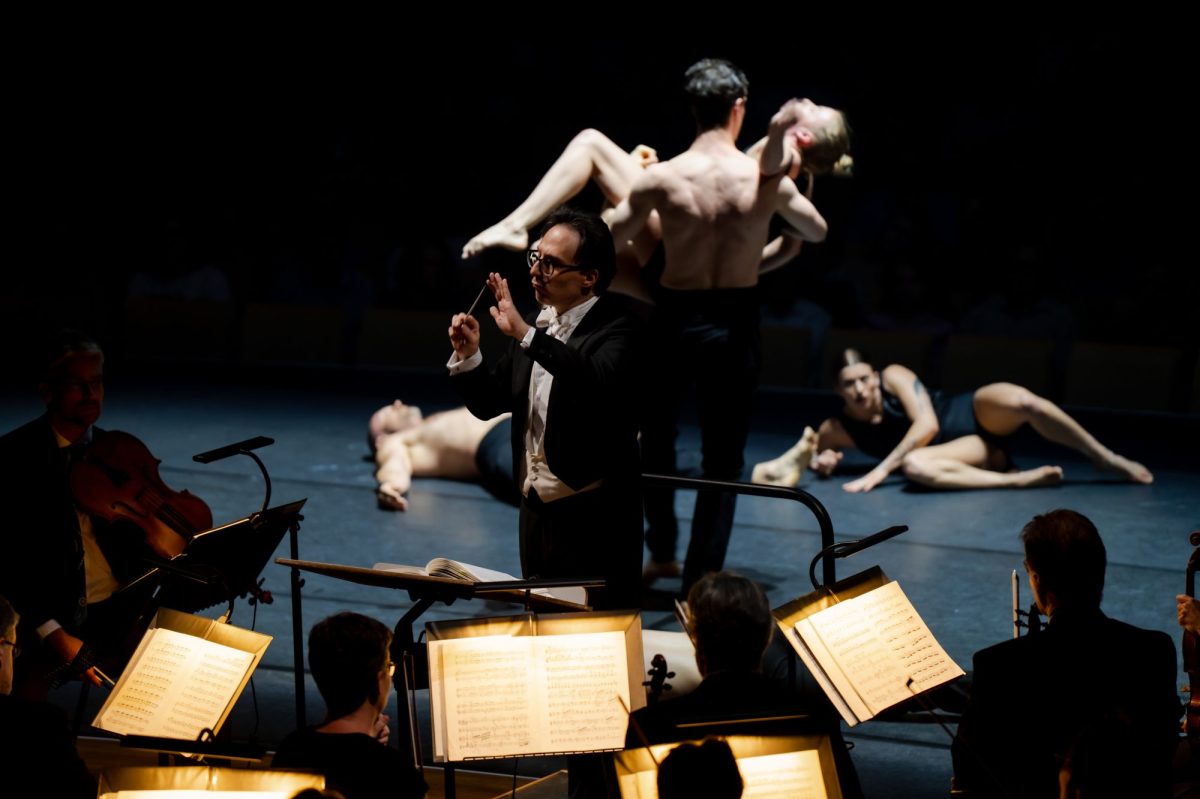Queensland Symphony Orchestra launched its 2025 season with a bill comprising a trio of works, Debussy’s Prélude à ‘L’après-midi d’un faune, Respighi’s Concerto Gregoriano and Stravinsky’s The Rite of Spring.
Jump to:
Debussy’s ‘Prélude à ‘L’après-midi d’un faune’
The first of part of the program, loosely based on Mallarmé’s symbolic poem of the same name, is glorious, sensuous music. Highlighting emotions, moods and desires, Debussy’s impressionistic tone poem describes a half-goat, half-man creature who revels with nymphs in the forest, then sleeps and dreams.
Queensland Symphony Orchestra’s (QSO) Chief Conductor, Umberto Clerici, gave us a passionate, heartfelt reading of this score, the colourful imagery and melodic nuances that were well-crafted and played. The gentle solo flute of the Faun’s panpipes, opening the piece, was expertly played by principal Alison Mitchell.
Well-supported by solos from Huw Jones on oboe and Irit Silvers on clarinet, and with sweeping lush legato from the strings, shimmering harps and finely balanced horns, this was an atmospheric and evocative rendition.
Respighi’s ‘Concerto Gregoriano’
Inspired by the motifs of ancient Gregorian chants, Respighi’s Concerto Gregoriano is considered an unsung hero of the violin repertoire. Not often performed, it certainly has much to offer for orchestra and soloist alike.
It’s a virtuosic piece for any violinist, and Kristian Winther, QSO’s 2025 Artist in Residence, bravely took on the challenge. He played the two richly scored cadenzas sensitively and with much feeling and technical skill. However, he seemed to be less in control when playing alongside the Orchestra in many sections.
It proved difficult to hear his solo violin above the full symphonic sound, with its large contingent of strings, as well as heavy brass and percussion. His very fine instrument offered a warm and almost romantic quality in the expressive second movement, but seemed muted in the final energetic and fast finale, as the Orchestra took full control.
With powerful playing by the QSO, Clerici kept a very strong beat, watching and encouraging Winther in his attention to both intonation and rhythm.
Stravinsky’s ‘The Rite of Spring’
Stravinsky’s balletic The Rite of Spring nearly caused a riot when it premiered in 1913 in Paris. Composed for the Diaghilev Ballet company and choreographed by Nijinsky, the inclusion of dance in an orchestral work was unusual. Moreover, the music itself was modern and so explosive that it shocked the audience of the day. It is now recognised as one of the most influential musical works of the 20th century.
The QSO has continued the tradition of having a strong physical and visual component to complement Stravinsky’s score, but has chosen to update the concept by replacing the original choreographed ballet with acrobats.
Brisbane-based, internationally recognised Circa, which created the world’s first circus interpretation of The Rite of Spring, worked with the Orchestra to combine Stravinsky’s powerful score with the physicality of acrobats in a fusion of music, performance and visuals. The result of this collaboration was nothing less than a triumph, leading to a standing ovation by a packed Concert Hall that went on for several minutes.
Inspired by pagan rituals, The Rite of Spring has a single theme based on the mystery of the creative power of spring but, with war on the horizon, Stravinsky was telling it predominantly from a dark place. The overwhelming crashing, cacophonous music is omnipresent while the need for sacrifice, as represented by the young ‘chosen one’, involves dancing herself to death.
Clerici conducted his huge orchestral forces with vigour and tremendous energy. Powerfully controlled, he leaned heavily on delivering Stravinsky’s foreboding music with its pounding rhythms, atonal shrieks, percussive snarls and sinister drum beats alongside strident brass and frenetic basses.
Skilfully he managed to pull back as required to a lighter sonority, with some ethereal, almost magical moments from the opening bassoon through flute trills, gentle woodwind and muted trumpets.
Meanwhile, Circa’s 10 acrobats to the front of the stage worked seamlessly to create near-perfect acrobatic and visual stage pictures in unison with the score. A spontaneous fluidity of almost non-stop movement included impressive feats, ranging from writhing, intertwined bodies in slower scenes through to intense acrobatic sequences of pyramids, cartwheels, rolls, frenetic running, plus throwing and catching each other.
Read: Theatre review: Song of First Desire, Belvoir St Theatre
The pounding rhythms of the ‘Augurs of Spring’ and other dance sequences produced equivalent acrobatic jumps, plus perfectly timed mechanical twitches and jerks. The dancers were assisted by deep red lighting in the ‘Glorification of the Chosen One’ section, while the intense and fierce physical build to the tragic ending was nail-biting.
The direction by Yaron Lifschitz and the response to – and interpretation by – the acrobats was impressive.
The Rite of Spring
Presented by Queensland Symphony Orchestra with Circa
Concert Hall, QPAC
Conductor: Umberto Clerici
Soloist: Kristian Winther, violin
Director (Circa): Yaron Lifschitz
Performers: Holly-Rose Boyer, Helga Ehrenbusch, Scott Grove, Chelsea Hall, Sam Letch, Daniel O’Brien, Lachlan Sukroo, Joshua Strachan, Billie Wilson-Coffey, Christina Zauner
The Rite of Spring was performed 20-22 February 2025.





